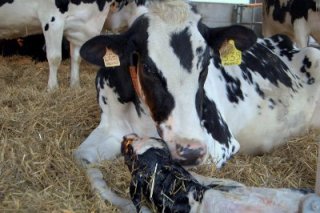Fertility in dairy Cows
ANIMALS & HEALTH
 Achieving a high reproductive efficiency is one of the main objectives of dairy farmers. Milk production levels are directly dependent on this parameter and consequently also the farm’s profitability.
Achieving a high reproductive efficiency is one of the main objectives of dairy farmers. Milk production levels are directly dependent on this parameter and consequently also the farm’s profitability.
The indices that describe the reproductive efficiency of the herd are numerous; the most used are:
- calving to conception interval (CCI - period in days that goes from calving to the day of insemination that causes the next pregnancy),
- calving interval (the period between the last calving and the previous one),
- pregnancy rate (PR: % of pregnant animals in 21 days),
- percentage of forced replacements due to infertility (the number of lactating cows which are replaced versus the yearly total number of lactating cows, fresh cows included; infertility is the main reason for culling dairy cows).
 These are all essential parameters for the general assessment of the reproductive performance on the dairy farm.
These are all essential parameters for the general assessment of the reproductive performance on the dairy farm.
In all the countries with and advanced livestock production in the last thirty years there has been a substantial deterioration in dairy cow reproductive performance.
In Italy, against a constant increase in milk production/head that substantially doubled to about 86 q/head¹, the calving to conception interval only increased from 100 to 147 days.
This phenomenon is partly explained by the fact that cows have been subjected to an increased metabolic pressure; however, this does not occur on farms in which strong genetic progress has been accompanied by appropriate health and nutritional management (especially during the dry and transition periods and calving) as well as by a proper evaluation and management of reproduction strategies.
¹ Campiotti M., (2007), Gestione, primo limite all'efficienza riproduttiva, Suppl. to L'Informatore Agrario 4/2007






















































